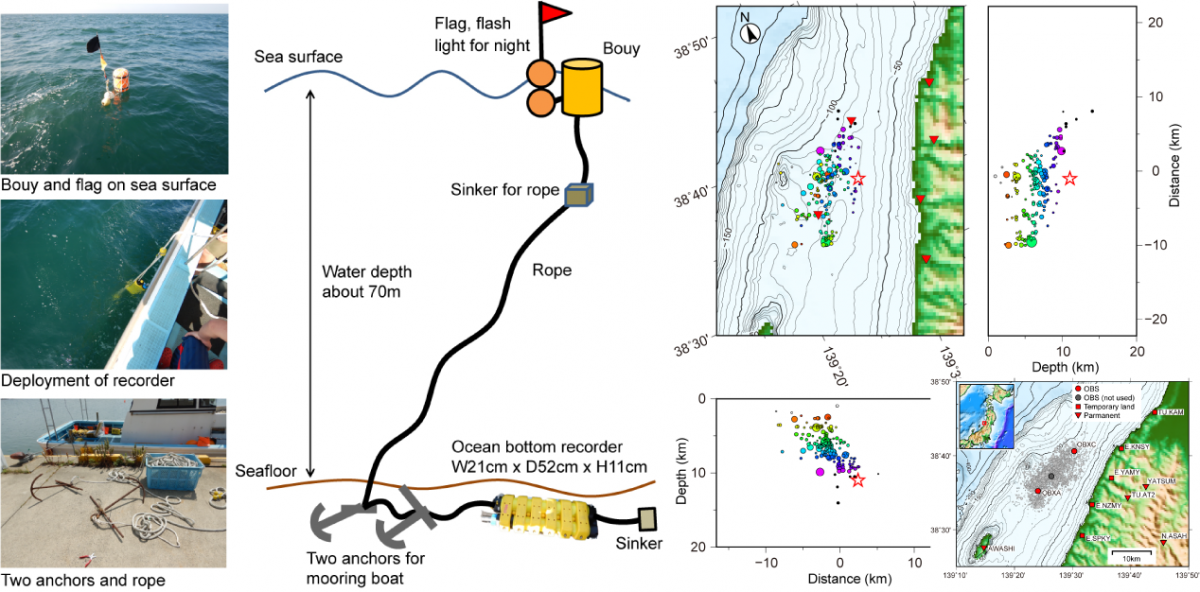Masanao Shinohara1* , Shin’ichi Sakai1, Tomomi Okada2, Hiroshi Sato1, Yusuke Yamashita3, Ryota Hino2, Kimihiro Mochizuki1 and Takeshi Akuhara1
1 Earthquake Research Institute, The University of Tokyo, 2 Research Center for Prediction of Earthquakes and Volcanic Eruptions, Graduate School of Science, Tohoku University, 3 Miyazaki Observatory, Research Center for Earthquake Prediction, Disaster Prevention Research
Institute, Kyoto University
Earth, Planets and Space (2022) 74:5, https://doi.org/10.1186/s40623-021-01562-6
An earthquake with a magnitude of 6.7 occurred in the Japan Sea off Yamagata on June 18, 2019. The mainshock had a source mechanism of reverse-fault type with a compression axis of WNW–ESE direction. Since the source area is positioned in a marine area, seafloor seismic observation is indispensable for obtaining the precise distribution of the aftershocks. The source area has a water depth of less than 100 m, and fishing activity is high. It is difficult to perform aftershock observation using ordinary free-fall pop-up type ocean bottom seismometers (OBSs). We developed a simple anchored-buoy type OBS for shallow water depths and performed the seafloor observation using this. The seafloor seismic unit had three-component seismometers and a hydrophone. Two orthogonal tiltmeters and an azimuth meter monitored the attitude of the package. For seismic observation at shallow water depth, we concluded that an anchored-buoy system would have the advantage of avoiding accidents. Our anchored-buoy OBS was based on a system used in fisheries. We deployed three anchored-buoy OBSs in the source region where the water depth was approximately 80 m on July 5, 2019, and two of the OBSs were recovered on July 13, 2019.
Temporary land seismic stations with a three-component seismometer were also installed. The arrival times of P- and S-waves were read from the records of the OBSs and land stations, and we located hypocenters with correction for travel time. A preliminary location was performed using absolute travel time and final hypocenters were obtained using the double-difference method. The aftershocks were distributed at a depth range of 2.5 km to 10 km and along a plane dipping to the southeast. The plane formed by the aftershocks is consistent with the focal mechanism of the mainshock. The activity region of the aftershocks was positioned in the upper part of the upper crust. Focal mechanisms were estimated using the polarity of the first arrivals. Although many aftershocks had a reverse-fault focal mechanism similar to the focal solution of the mainshock, normal-fault type and strike–slip fault type focal mechanisms were also estimated.
Figure caption
Left: Photographs and schema of the developed simple anchored-buoy type OBS. Right: Final hypocenter distribution (July 5–July 13, 2019) obtained using the double difference method with index map.


